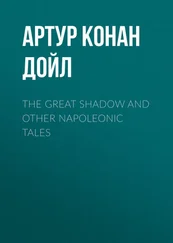1 ...7 8 9 11 12 13 ...26 36 Kah, M. and Hofmann, T. (2014). Nanopesticide research: current trends and future priorities. Environment International 63: 224–235.
37 Kashyap, P.L., Xiang, X., and Heiden, P. (2015). Chitosan nanoparticle based delivery systems for sustainable agriculture. International Journal of Biological Macromolecules 77: 36–51.
38 Khatami, M., Sharifi, I., Nobre, M.A. et al. (2018). Waste‐grass‐mediated green synthesis of silver nanoparticles and evaluation of their anticancer, antifungal and antibacterial activity. Green Chemistry Letters and Reviews 11 (2): 125–134.
39 Khodakovskaya, M.V., De Silva, K., Biris, A.S. et al. (2012). Carbon nanotubes induce growth enhancement of tobacco cells. ACS Nano 6 (3): 2128–2135.
40 Kim, D.Y., Kadam, A., Shinde, S. et al. (2018). Recent developments in nanotechnology transforming the agricultural sector: a transition replete with opportunities. Journal of the Science of Food and Agriculture 98: 849–864.
41 Kottegoda, N., Sandaruwan, C., Priyadarshana, G. et al. (2017). Urea‐hydroxyapatite nanohybrids for slow release of nitrogen. ACS Nano 11: 1214–1221.
42 Krishnaraj, C., Ramachandran, R., Mohan, K., and Kalaichelvan, P. (2012). Optimization for rapid synthesis of silver nanoparticles and its effect on phytopathogenic fungi. Spectrochimica Acta Part A: Molecular and Biomolecular Spectroscopy 93: 95–99.
43 Kumar, S., Bhanjana, G., Sharma, A. et al. (2014). Synthesis, characterization and on field evaluation of pesticide loaded sodium alginate nanoparticles. Carbohydrate Polymers 101: 1061–1067.
44 León‐Silva, S., Fernández‐Luqueño, F., and López‐Valdez, F. (2018). Engineered nanoparticles: are they an inestimable achievement or a health and environmental concern? In: Agricultural Nanobiotechnology: Modern Agriculture for a Sustainable Future (eds. F. López‐Valdez and F. Fernández‐Luqueño), 183–212. Cham: Springer Nature.
45 Li, J., Chang, P.R., Huang, J. et al. (2013). Physiological effects of magnetic iron oxide nanoparticles towards watermelon. Journal of Nanoscience and Nanotechnology 13: 5561–5567.
46 Li, J., Hu, J., Ma, C. et al. (2016). Uptake, translocation and physiological effects of magnetic iron oxide (γ‐Fe2O3) nanoparticles in corn (Zea mays L.). Chemosphere 159: 326–334.
47 Liu, R. and Lal, R. (2015). Synthetic apatite nanoparticles as a phosphorus fertilizer for soybean (Glycine max). Scientific Reports 4: 5686.
48 Malerba, M. and Cerana, R. (2016). Chitosan effects on plant systems. International Journal of Molecular Sciences 17: 996.
49 Moghaddasi, S., Khoshgoftarmanesh, A.H., Karimzadeh, F., and Chaney, R.L. (2013). Preparation of nano‐particles from waste tire rubber and evaluation of their effectiveness as zinc source for cucumber in nutrient solution culture. Scientia Horticulturae 160: 398–403.
50 Mohamed, M.A. and Abd‐Elsalam, K.A. (2018). Nanoantimicrobials for plant pathogens control: potential applications and mechanistic aspects. In: Nanobiotechnology Applications in Plant Protection, Nanotechnology in the Life Sciences (eds. K. Abd‐Elsalam and R. Prasad), 87–109. Cham: Springer.
51 Mondal, K.K. and Mani, C. (2012). Investigation of the antibacterial properties of nanocopper against Xanthomonas axonopodis pv. punicae, the incitant of pomegranate bacterial blight. Annals of Microbiology 62 (2): 889–893.
52 Naderi, M.R. and Danesh‐Shahraki, A. (2013). Nanofertilizers and their roles in sustainable agriculture. International Journal of Agriculture and Crop Sciences 5: 2229–2232.
53 Nair, P.M.G. (2018). Toxicological impact of carbon nanomaterials on plants. In: Nanotechnology, Food Security and Water Treatment, Environmental Chemistry for a Sustainable World (eds. K. Gothandam, S. Ranjan, N. Dasgupta, et al.), 163–183. Cham: Springer Nature.
54 Paret, M.L., Palmateer, A.J., and Knox, G.W. (2013a). Evaluation of a light‐activated nanoparticle formulation of titanium dioxide with zinc for management of bacterial leaf spot on rosa ‘Noare’. Horticultural Science 48 (2): 189–192.
55 Paret, M.L., Vallad, G.E., Averett, D.R. et al. (2013b). Photocatalysis: effect of light‐activated nanoscale formulations of TiO2 on Xanthomonas perforans and control of bacterial spot of tomato. Phytopathology 103 (3): 228–236.
56 Pradhan, S., Patra, P., Das, S. et al. (2013). Photochemical modulation of biosafe manganese nanoparticles on Vigna radiata: a detailed molecular, biochemical, and biophysical study. Environmental Science & Technology 47 (22): 13122–13131.
57 Raliya, R., Biswas, P., and Tarafdar, J. (2015). TiO2 nanoparticle biosynthesis and its physiological effect on mung bean (Vigna radiata L.). Biotechnology Reports 5: 22–26.
58 Raliya, R., Saharan, V., Dimkpa, C., and Biswas, P. (2018). Nanofertilizer for precision and sustainable agriculture: current state and future perspectives. Journal of Agricultural and Food Chemistry 66 (26): 6487–6503.
59 Rico, C.M., Lee, S.C., Rubenecia, R. et al. (2014). Cerium oxide nanoparticles impact yield and modify nutritional parameters in wheat (Triticum aestivum L.). Journal of Agricultural and Food Chemistry 62 (40): 9669–9675.
60 Rico, C.M., Barrios, A.C., Tan, W. et al. (2015). Physiological and biochemical response of soil‐grown barley (Hordeum vulgare L.) to cerium oxide nanoparticles. Environmental Science and Pollution Research 22 (14): 10551–10558.
61 Rui, M., Ma, C., Hao, Y. et al. (2016). Iron oxide nanoparticles as a potential iron fertilizer for peanut (Arachis hypogaea). Frontiers in Plant Science 7: 815.
62 Sadeghi, R., Rodriguez, R.J., Yao, Y., and Kokini, J.L. (2017). Advances in nanotechnology as they pertain to food and agriculture: benefits and risks. Annual Review of Food Science and Technology 8: 467–492.
63 Saharan, V., Sharma, G., Yadav, M. et al. (2015). Synthesis and in vitro antifungal efficacy of Cu–chitosan nanoparticles against pathogenic fungi of tomato. International Journal of Biological Macromolecules 75: 346–353.
64 Saharan, V., Kumaraswamy, R.V., Choudhary, R.C. et al. (2016). Cu‐chitosan nanoparticle mediated sustainable approach to enhance seedling growth in maize by mobilizing reserved food. Journal of Agricultural and Food Chemistry 64 (31): 6148–6155.
65 Salem, N.M., Albanna, L.S., Awwad, A.M. et al. (2016a). Green synthesis of nano‐sized sulfur and its effect on plant growth. Journal of Agricultural Science 8 (1): 188–194.
66 Salem, N.M., Albanna, L.S., Abdeen, A.O. et al. (2016b). Sulfur nanoparticles improves root and shoot growth of tomato. Journal of Agricultural Science 8 (4): 179–185.
67 Sharonova, N.L., Yapparov, A.K., Khisamutdinov, N.S. et al. (2015). Nanostructured water‐phosphorite suspension is a new promising fertilizer. Nanotechnologies in Russia 10: 651–661.
68 Singh, M.D., Chirag, G., Patidar, O.P. et al. (2017). Nano‐fertilizers is a new way to increase nutrients use efficiency in crop production. International Journal of Agriculture Sciences 97: 3831–3833.
69 Song, G., Gao, Y., Wu, H. et al. (2012). Physiological effect of anatase TiO2 nanoparticles on Lemna minor. Environmental Toxicology and Chemistry 31: 2147–2152.
70 Subbaiah, L.V., Prasad, T.N.V.K.V., Krishna, T.G. et al. (2016). Novel effects of nanoparticulate delivery of zinc on growth, productivity, and zinc biofortification in maize (Zea mays L.). Journal of Agricultural and Food Chemistry 64: 3778–3788.
71 Taha, R.A., Hassan, M.M., Ibrahim, E.A. et al. (2016). Carbon nanotubes impact on date palm in vitro cultures. Plant Cell, Tissue and Organ Culture 127 (2): 525–534.
72 Tarafdar, J., Raliya, R., Mahawar, H., and Rathore, I. (2014). Development of zinc nanofertilizer to enhance crop production in pearl millet (Pennisetum americanum). Agricutlural Research 3: 257–262.
Читать дальше












